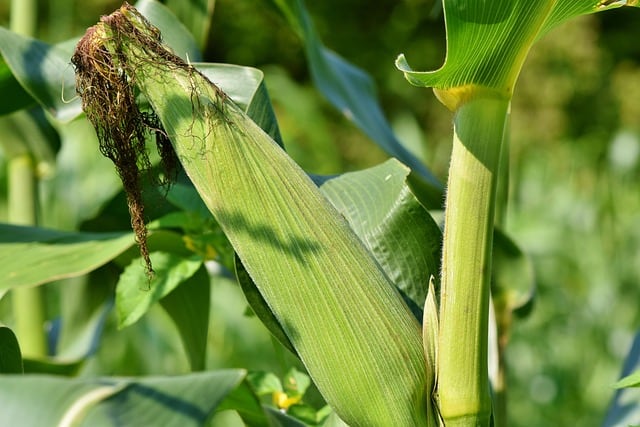Planting corn is an essential aspect of farming and food production. Many farmers use grain drills to plant crops, but can you plant corn with a grain drill? The answer is yes, and it is an efficient way to get your crop in the ground. However, you will need to make a few adjustments to the settings on your drill to ensure successful corn planting.
Understanding grain drills is essential for successful corn planting. Grain drills are machines that can be attached to a tractor or pulled behind it and have multiple long tubes that contain seed.
They evenly spread the seeds as they pass over each row of soil. When planting corn with a grain drill, it is important to adjust the drill’s settings to ensure the proper seed depth, spacing, and rate.
Planting corn with a grain drill is an easy and efficient way to get your crop in the ground. In this article, we will discuss how to plant corn with a grain drill, fertilizer application, dealing with different seeds, no-till planting, creating a food plot, advanced techniques, and frequently asked questions.
By the end of this article, you will have a better understanding of how to plant corn with a grain drill and the benefits of using this method.
Key Takeaways
- Grain drills are machines that can be used to plant corn efficiently.
- Adjusting the drill’s settings is crucial to ensure successful corn planting.
- Planting corn with a grain drill is an easy and efficient way to get your crop in the ground.
Check out these other top picks:
- Can You Plant Chufa and Clover Together?
- Can You Plant Cactus and Aloe Vera Together?
- Planting Cabbage and Brussels Sprouts Together
Understanding Grain Drills
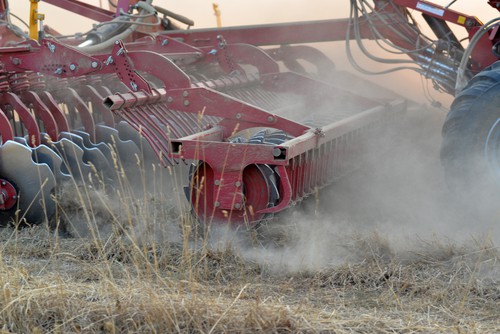
Grain drills are machines used for planting seeds in rows at a consistent depth and spacing. They are commonly used in agriculture to plant crops such as corn, soybeans, wheat, and more. This section will cover the components and working mechanism of a grain drill.
Components of a Grain Drill
A grain drill typically consists of the following components:
- Seed box or hopper: This is where the seeds are stored before they are planted.
- Metering system: This regulates the flow of seeds from the hopper to the tubes.
- Tubes: These are long tubes that carry the seeds from the metering system to the ground.
- Coulter or opener: This is a disc or blade that cuts through the soil to create a furrow for the seeds.
- Seed tubes: These are tubes that drop the seeds into the furrow created by the coulter.
- Press wheel: This is a wheel that presses the soil around the seeds to improve seed-to-soil contact.
Working Mechanism
The working mechanism of a grain drill is relatively simple. The seeds are stored in the hopper and fed into the metering system, which regulates the flow of seeds into the tubes. The coulter or opener cuts through the soil to create a furrow for the seeds.
The seed tubes drop the seeds into the furrow, and the press wheel presses the soil around the seeds to improve seed-to-soil contact.
Grain drills can be used for conventional tillage or no-till farming. In conventional tillage, the soil is tilled before planting, while in no-till farming, the soil is left undisturbed. No-till drills are designed to work in undisturbed soil and typically have coulters that cut through the residue on the soil surface.
Air seeders are another type of drill that uses air pressure to move the seeds from the hopper to the tubes. They are commonly used for planting large seeds such as corn and soybeans.
Planting Corn with a Grain Drill
Planting corn with a grain drill is possible, but it requires some adjustments to the settings on the drill. Here are some tips on how to plant corn with a grain drill.
1. Seed Spacing
Seed spacing is crucial when planting corn with a grain drill. The spacing between seeds should be consistent to ensure even growth and avoid overcrowding. The recommended spacing for corn is between 6 and 10 inches apart, depending on the variety of corn.
2. Seed Depth
Seed depth is another important factor to consider when planting corn with a grain drill. The seed depth should be consistent to ensure that the corn germinates and grows properly. The recommended seed depth for corn is between 1.5 and 2 inches deep.
3. Planting Conditions
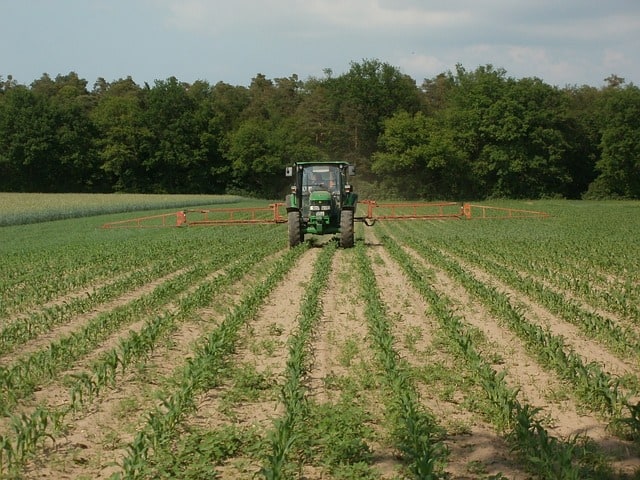
Planting conditions are also important when planting corn with a grain drill. The soil should be well-prepared and free of weeds. The soil should also be moist but not too wet. Planting should be done when the soil temperature is between 55 and 60 degrees Fahrenheit.
To achieve consistent seed depth and spacing, it is recommended to use a grain drill that has a seed metering system. This system ensures that the seeds are planted at a consistent depth and spacing. It also ensures good seed-to-soil contact, which is essential for proper germination and growth.
Fertilizer Application
When planting corn with a grain drill, it is important to consider fertilizer application. Proper fertilization can help increase yields and improve the quality of the crop. This section will cover the types of fertilizers that can be used and the application techniques that are recommended.
Types of Fertilizers
There are several types of fertilizers that can be used when planting corn with a grain drill. The most common type is nitrogen fertilizer, which is essential for corn growth. Other types of fertilizers that can be used include phosphorus and potassium fertilizers, which can help improve soil quality and increase yields.
Nitrogen fertilizer can be applied in several forms, including granular, liquid, or as anhydrous ammonia. Granular fertilizer is the most common type used with grain drills, as it is easy to handle and can be applied with the grain drill.
Liquid fertilizer can also be used, but it requires a special attachment to the grain drill. Anhydrous ammonia is a gas that is applied to the soil and requires a separate applicator.
Application Technique
When applying fertilizer with a grain drill, it is important to make sure that the fertilizer is evenly distributed throughout the soil. Uneven distribution can result in poor growth and reduced yields. The type of fertilizer used will also determine the application technique that is recommended.
For granular fertilizer, it is recommended to apply the fertilizer before planting the corn. This can be done by adding the fertilizer to the seed box of the grain drill. The fertilizer will then be distributed evenly throughout the soil as the corn is planted.
For liquid fertilizer, a special attachment is required to apply the fertilizer with the grain drill. The attachment will distribute the fertilizer evenly throughout the soil as the corn is planted.
Anhydrous ammonia is typically applied in the fall before planting. This requires a separate applicator that is pulled behind a tractor. The applicator will inject the gas into the soil, where it will be converted into a liquid and absorbed by the soil.
Dealing with Different Seeds
When it comes to planting with a grain drill, different seeds require different handling techniques. Here are some tips on how to handle small seeds and planting mixed seeds.
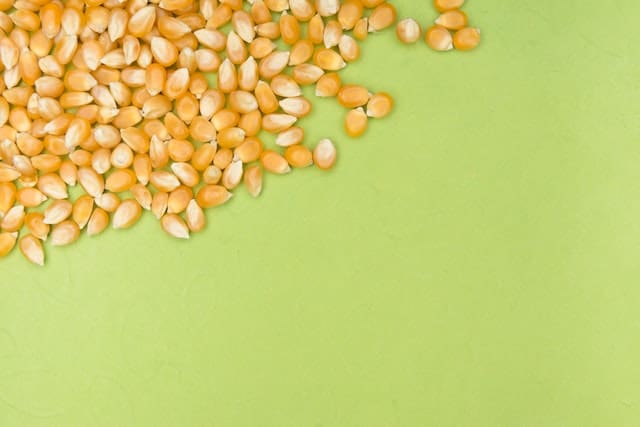
Handling Small Seeds
Small seeds like soybeans and oats can be tricky to handle with a grain drill. The small size of the seeds can cause them to get stuck in the drill’s mechanisms, which can lead to uneven planting and low germination rates.
To handle small seeds, it’s important to make sure that the drill’s seed rate is set correctly. This will ensure that the seeds are being planted at the right depth and spacing. It’s also a good idea to clean the drill thoroughly before planting small seeds to remove any debris that could interfere with the planting process.
Another option is to use a special attachment designed for planting small seeds. These attachments can help ensure that the seeds are being planted at the right depth and spacing, which can lead to better germination rates.
Planting Mixed Seeds
Planting mixed seeds with a grain drill can be a bit more challenging than planting single types of seeds. When planting mixed seeds, it’s important to make sure that the seed rate is set correctly for each type of seed. This will ensure that each type of seed is being planted at the right depth and spacing.
It’s also a good idea to mix the seeds thoroughly before planting to ensure that each type of seed is evenly distributed throughout the drill’s seed box. This will help prevent clumping and ensure that each type of seed is being planted in the right location.
If you’re planting a mix of seeds with different sizes, it’s important to adjust the drill’s settings accordingly. Larger seeds will need to be planted deeper than smaller seeds, so it’s important to make sure that the drill is set up to handle the different seed sizes.
No-Till Planting
No-till planting is a method of planting crops without disturbing the soil. It involves leaving the previous year’s crop residue on the field, which acts as a natural mulch, and planting the new crop directly into the residue. No-till planting has several benefits, including reduced soil erosion, improved soil health, and increased yields.
Benefits of No-Till Planting
No-till planting has several benefits over traditional tillage methods. One of the main benefits is reduced soil erosion. When soil is tilled, it becomes more susceptible to erosion from wind and water. No-till planting helps to maintain soil structure and reduce erosion.
Another benefit of no-till planting is improved soil health. When the previous year’s crop residue is left on the field, it breaks down and adds organic matter to the soil. This organic matter helps to improve soil structure, water retention, and nutrient availability.
No-till planting can also lead to increased yields. By leaving the previous year’s crop residue on the field, the soil is able to retain more moisture, which can help to improve crop growth and yield. Additionally, no-till planting can help to reduce weed pressure, which can also lead to increased yields.
Using a No-Till Corn Planter
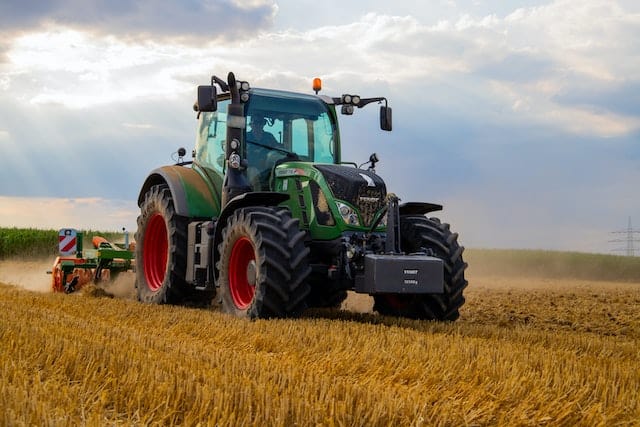
When planting corn using a no-till method, it is important to use a no-till corn planter. These planters are designed to plant corn directly into the previous year’s crop residue without disturbing the soil.
One of the key features of a no-till corn planter is the row unit. The row unit is designed to cut through the previous year’s crop residue and place the seed directly into the soil. The depth of the seed placement can be adjusted based on soil conditions and the type of corn being planted.
Another important feature of a no-till corn planter is the closing wheels. The closing wheels are designed to press the soil around the seed to ensure good seed-to-soil contact. This helps to promote good germination and early growth.
Creating a Food Plot
Planting a food plot can be a great way to attract deer and other wildlife to a specific area. However, it is important to choose the right crop and plant it correctly in order to achieve the desired results.
Choosing the Right Crop
When choosing a crop for a food plot, it is important to consider the size of the plot and the needs of the deer in the area. For smaller plots, clovers or brassicas may be a good choice, as they are easy to establish and provide good nutrition for deer.
For larger plots, corn and soybeans may be a better choice, as they provide a lot of food and can attract deer from a wider area.
It is also important to consider the soil type and pH levels when choosing a crop. Some crops, such as clovers, prefer acidic soil, while others, such as soybeans, prefer neutral soil. A soil test can help determine the best crop for the specific plot.
Planting for Deer
When planting a food plot for deer, it is important to consider the timing and planting method. Planting should be done well in advance of the hunting season, as it takes time for the crop to establish and attract deer.
For smaller plots, broadcasting the seed by hand may be a good option. For larger plots, a grain drill can be used to plant the seed more efficiently. However, it is important to ensure that the seed is planted at the correct depth and spacing for optimal growth.
In addition to planting the right crop, it is also important to maintain the food plot throughout the season. This may include fertilizing, mowing, and weeding as needed to ensure that the crop stays healthy and attractive to deer.
Advanced Techniques
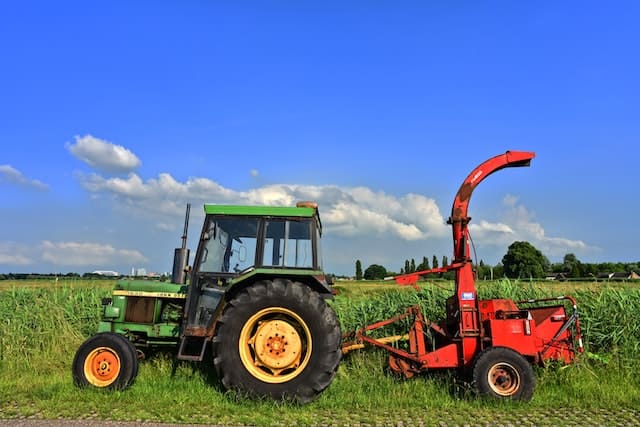
Using a 2 Row Planter
For those who have a larger area to plant, using a 2 row planter can save a significant amount of time and effort. A 2 row planter is a type of grain drill that has two rows of planting units spaced apart to allow for planting two rows of corn at a time. This method is more efficient than using a single-row grain drill because it can cover more ground in less time.
To use a 2 row planter, the operator must first adjust the planter to the desired spacing and depth. The planter should be set to plant corn at a depth of approximately 1.5 to 2 inches.
The spacing between the rows should be around 30 inches, and the distance between the planting units should be around 7 inches. Once the planter is adjusted, the operator can begin planting corn.
Growing Corn in the Backyard
Growing corn in the backyard is a great way to enjoy fresh, home-grown corn without having to go to the store. Corn can be grown in a variety of soil types, but it prefers well-drained soil that is rich in organic matter.
Before planting, the soil should be tested to determine its pH level and nutrient content. Corn requires a pH level of 6.0 to 6.5 and a high level of nitrogen.
To plant corn in the backyard, the soil should be tilled to a depth of around 6 inches. The corn should be planted in rows that are spaced around 30 inches apart, with the corn seeds planted around 7 inches apart.
Once the corn has been planted, it should be watered regularly to keep the soil moist. Corn requires around 1 inch of water per week, so it may be necessary to supplement rainfall with irrigation.
Save Time
Using a 2 row planter can save a significant amount of time when planting corn. By planting two rows of corn at once, the operator can cover more ground in less time, which can be especially beneficial for those with larger areas to plant.
Additionally, using a grain drill to plant corn can be more efficient than planting by hand because it ensures that the corn is planted at a consistent depth and spacing.
Conclusion
Planting corn with a grain drill is possible, and it can be an efficient and easy way to get crops in the ground. By making a few adjustments to the settings on the drill, it is possible to plant corn at the optimal depth and spacing for the best emergence.
When planting corn with a grain drill, it is important to ensure that the seed bed is well prepared and that the drill is set up correctly. Row spacing is also an important consideration, as the spacing between rows can affect the yield of the crop.
There are a variety of drills available on the market, including the Great Plains drill and the Genesis drill, that can be used to plant cereal grains and other crops. Some farmers have even used duct tape to modify their drills for better performance.
It is important to note that the use of Roundup and other Monsanto products has been controversial in recent years, and some farmers may choose to use alternative methods for weed control. Biomaxx is one such alternative that has been gaining popularity in recent years.
When planting corn with a grain drill, the recommended seeding rate is typically around 28,000 to 32,000 seeds per acre, with a target of 30,000 seeds per acre. Buckwheat is often used as a cover crop in between rows to help control weeds and improve soil health.
Frequently Asked Questions
What other crops can be planted with a grain drill?
A grain drill is a versatile piece of equipment that can be used to plant a variety of crops. In addition to corn, farmers commonly use grain drills to plant wheat, soybeans, oats, and other small grains. Some farmers even use grain drills to plant cover crops, like clover and rye, to help improve soil health and prevent erosion.
Is it possible to plant corn using a no-till drill?
Yes, it is possible to plant corn using a no-till drill. No-till planting is a popular method among farmers because it helps to conserve soil moisture and reduce erosion. When planting corn with a no-till drill, it is important to adjust the drill’s settings to ensure that the seeds are planted at the correct depth and spacing.
Can a grain drill be used to plant soybeans?
Yes, a grain drill can be used to plant soybeans. In fact, many farmers prefer to use a grain drill to plant soybeans because it allows for precise seed placement and reduces seed waste. When planting soybeans with a grain drill, it is important to adjust the drill’s settings to ensure that the seeds are planted at the correct depth and spacing.
What is the difference between a grain drill and a corn planter?
A grain drill and a corn planter are both pieces of equipment used to plant crops, but they work in different ways. A grain drill is designed to plant small grains, like wheat and oats, while a corn planter is specifically designed to plant corn. Corn planters typically have more rows than grain drills and can plant seeds at a faster rate.
Are there any alternatives to using a corn planter?
Yes, there are alternative methods for planting corn. Some farmers use a no-till drill to plant corn, while others use a precision planter. Precision planters are designed to plant seeds at a precise depth and spacing, which can help to increase yields and reduce seed waste.
Can corn be planted using an air drill?
Yes, corn can be planted using an air drill. Air drills are similar to grain drills, but they use air pressure to deliver the seeds to the ground. When planting corn with an air drill, it is important to adjust the drill’s settings to ensure that the seeds are planted at the correct depth and spacing.

Hey, I’m Lisa and I’ve been an avid gardener for over 30 years. I love writing, talking and living in the garden! Feel free to connect with me on my socials below

